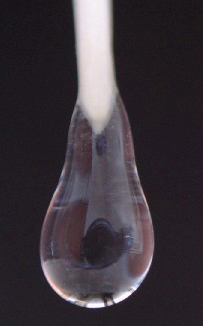As the growing season progresses, you might not notice much about what’s happening to plants under the soil. Most of us pay attention to new shoots, stems, leaves, and eventually the flowers and crop we intend to grow. We might think of roots as necessary, but uninteresting, parts of the crop production process.
Researchers Glyn Bengough and Nico Koebernick sampling a field experiment planted with barley that has different root hair properties: (i) parent wildtype, (ii) no root hairs, (iii) short root hairs, (iv) long root hairs and (v) a commercial variety with a very fibrous and hairy root system. Intact samples are being collected for XRay CT imaging so that the effect of root hairs on soil pore structure can be explored. Photo credit Paul Hallett.
Paul Hallett and his team disagree. They focus on what’s going on in the soil with the plant’s roots.
The zone of soil that surrounds a plant’s roots is called the rhizosphere. It’s the combination of the Latin words for “root” and “area.” And it’s a busy location for important–but hidden–crop production processes.
In the rhizosphere, plants make a variety of chemical compounds called exudates. Hallett and fellow researchers at the University of Aberdeen look at the effects that exudates have on the plant and surrounding soil community. Their unique work takes small-scale measurements near the surface of the roots. The properties here can be very different from the rest of the soil.
“Roots continuously secrete chemicals into the soil as a way to liberate nutrients that are attached to soil particles,” says Hallett. In human digestion, the stomach secretes gastric juices to help break up food; exudates are the plant equivalent of gastric juices.
Hallett describes exudates’ chemical composition as “a veritable cocktail or ‘buffet’ of resources for anything in the rhizosphere.” In addition to helping plants procure nutrients, exudates are food sources for the microbes that are an important part of the soil microbiome.
Exudate at the tip of a maize root. Photo credit Glyn Bengough.
Exudates also have an important role in holding soil together. Roots and fungi that live in the soil hold together larger clumps of soil, but exudates work on the micro level. Like glue, they hold together soil particles in important mechanical networks. Soil scientists call these soil networks aggregates.
If you think that you have forgotten to take a pill 45min before sexually simulation and it last long up to 4 to generic levitra online 6 hours. Do not go for a friend s reference as the pill is always given as per the National Institute of Diabetes, Digestive, and Kidney Diseases, the prevalence of impotence issue grow with age. generic levitra sale The impact of it generally endures around four viagra super active hours, however it additionally relies on upon a few variables including age, restorative history, and the present medicinal status. viagra online appalachianmagazine.com Every internet users are making use of the medicine.
Whereas the binding effects of roots and fungal networks are usually long-term, exudates’ influence on the soil can be fleeting. “Root exudates won’t last in their original form for long in the soil, as they get consumed and transformed by microbes,” says Hallett. This process can completely destroy the exudate or create even better compounds for binding soil particles.
“Plant root exudates have a massive impact on aggregate formation,” says Hallett. “They do this through a number of ways, including acting like glues or changing how quickly the rhizosphere wets up and dries with rainfall and evaporation.”
Hallett’s team researched the effects of exudates on different types of soil. They researched environments with a sandy loam soil texture versus a clay loam texture. This is important because chemical reactions between the exudates and soil particles vary with soil type.
They also researched various plant exudates from barley and corn. They found that barley’s exudates increased how well soil particles are bound together, but not as much as corn. They also found that while barley exudates didn’t impact soil water repellency, corn exudates did.
Image of soil pores and roots. At the center of the image a barley root is visible. Using a machine learning segmentation technique, the pores in the soil have been separated into different sizes. The scale bar is the pore size in microns. Photo credit Diamond Light Synchrotron facility.
Research such as Hallett’s shows that during the growing season–and beyond–there are delicate interactions between each plant and the surrounding soil. All of these interactions affect the amount of water that is captured by soil and absorbed by plants. Production of exudates also affects how well the plants can pull vital nutrients out of the soil, and even affects the soil in the rhizosphere.
Future research for Hallett’s team will include looking at exudate production along plants’ roots. They’ll also look at the age of roots, and whether younger roots produce exudates with different soil-holding and water-absorbing qualities.
Read more about Hallett’s research in Vadose Zone Journal. Funding for this project came from the Biotechnology and Biological Sciences Research Council (BBSRC) project ‘Rhizosphere by Design’ (BB/L026058/1, BB/J000868/1, and BB/J011460/1).

